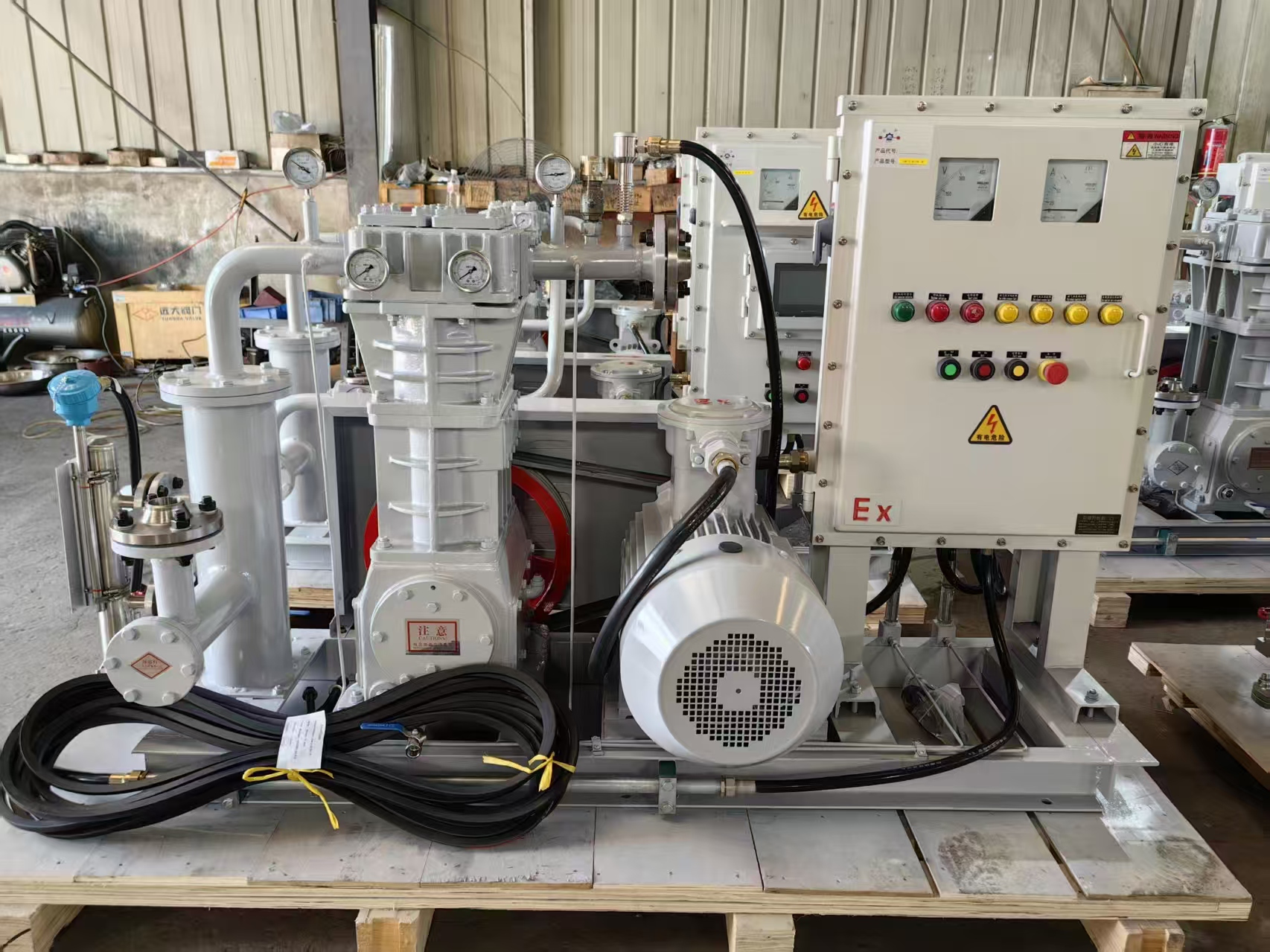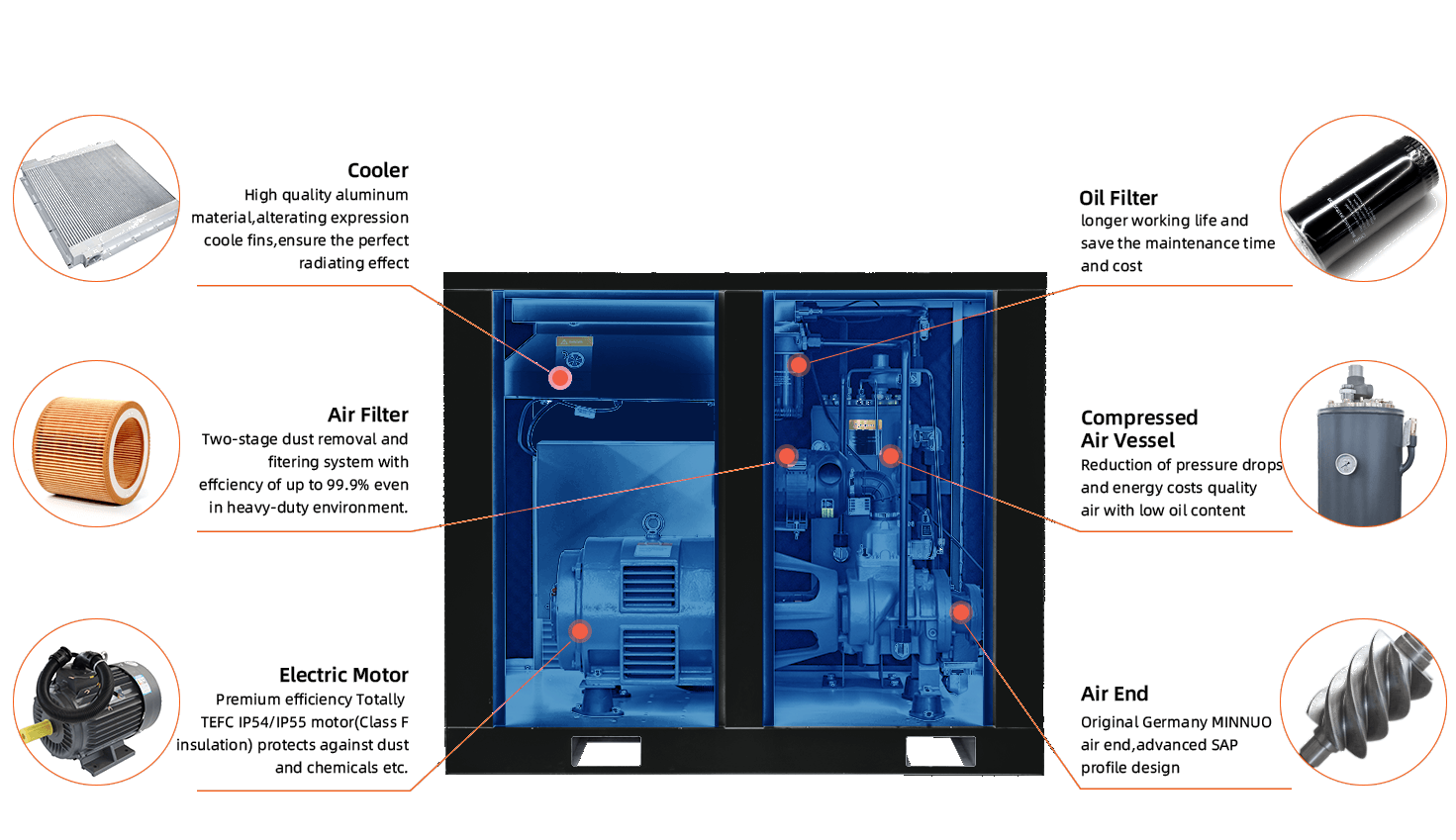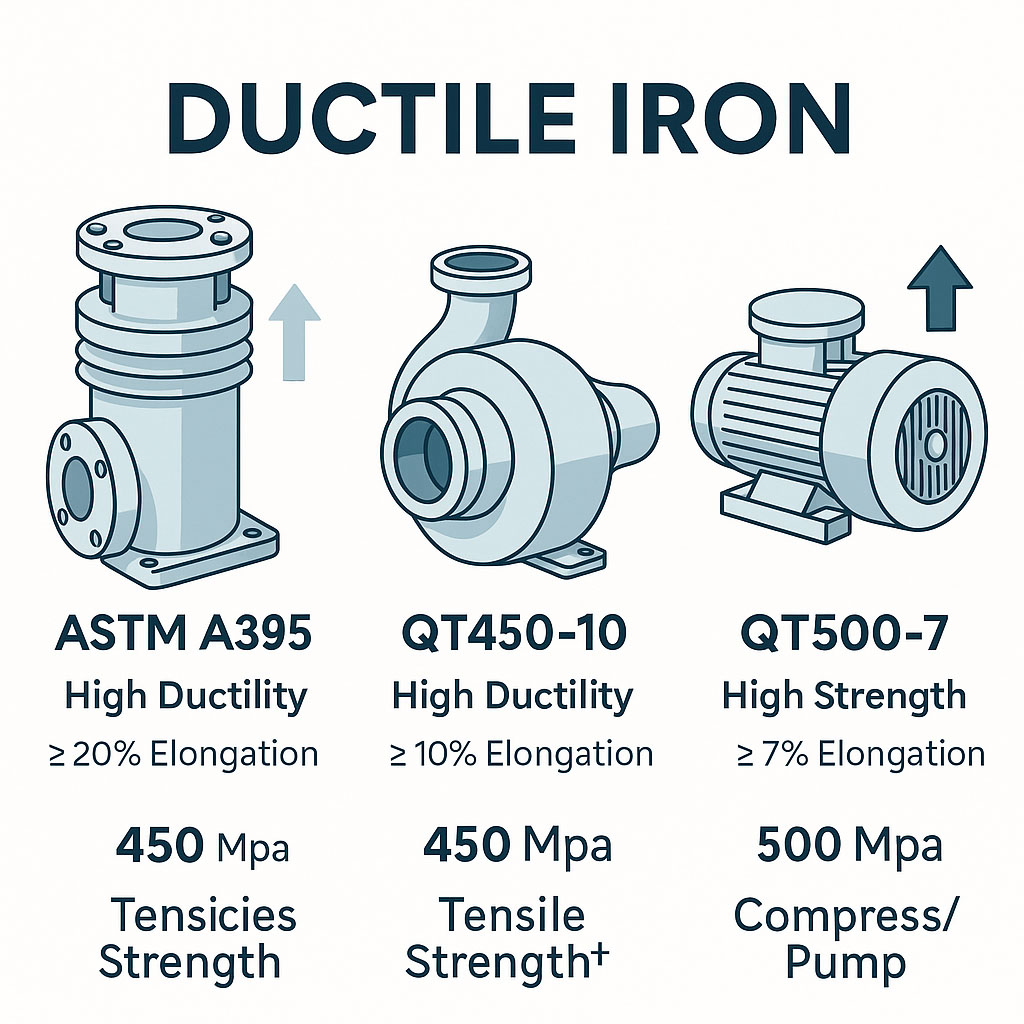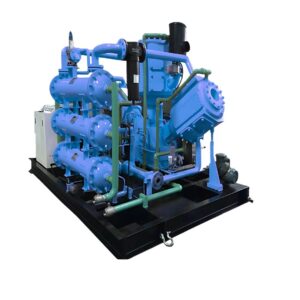当工业流程需要高压气体输送时、 往复式气体压缩机活塞式压缩机--又称活塞压缩机--往往能赢得客户的青睐。与螺杆式压缩机不同,活塞式压缩机具有高压缩比、高效的非设计运行和气体类型多样性等优点。但选择合适的型号需要在技术、尺寸、材料和维护需求之间取得平衡。
1.往复式与螺杆式:了解您的技术
-
承压能力:往复式压缩机提供 压力更高 (通常超过 1,200 PSI 或 ~80 bar),而螺杆压缩机通常限制在 ~250-600 PSIG
-
占空比和噪音:螺杆压缩机提供 连续运行,性能更平稳、更安静.往复式机组提供循环工作,产生更多振动,但在部分负荷条件下性能更好。 .
-
适用性:往复式压缩机组在高压、间歇工作或撬装式 gbp 压缩机设置中表现出色--非常适合作为 工业活塞压缩机 用于石油和天然气、加工厂或氮气增压生产线。
🛠 探索 Keep-Win 的全部内容 [往复式气体压缩机范围](https://keep-win.com/products/reciprocating-gas-compressors) 为高压、多级需求量身定制。
2.压缩机选型:避免设计不足或过度
正确的尺寸可确保可靠性和能源效率。下面介绍如何正确确定尺寸:
-
确定明确的流程要求:确定所需流量(CFM/Nm³/h)和排放压力。考虑高峰需求和扩展计划。
-
因子同期性与安全边际:多用户同时使用时,假设同时使用 20-30% 左右,然后加上 25-50% 安全系数,以避免压降或过小
-
匹配负载和气缸设计:大多数单级活塞式压缩机的额定工作周期为 50%,这意味着它们需要较大的电机来冷却和避免过热
关键变量:所需 PSI/bar、自由空气输送量(CFM/Nm³/h)、工作周期和能源。
3.气体特性和材料兼容性
往复式压缩机必须处理特定的气体特性,尤其是腐蚀性气体或高纯度气体。请考虑
-
腐蚀性或磨蚀性气体 可能需要不锈钢活塞、内衬和专用阀门材料。
-
密封设计 必须避免载体污染--对于纯度要求严格或有害的气体,两级或吹扫包装密封系统是必不可少的。
-
API 618 变体 它们通常用于石化或低温服务,由高强度棒材和锻造部件制成。
在 Keep-Win,我们的压缩机可根据工艺气体、高腐蚀环境或高纯度标准进行定制,以确保在各种应用中的适用性和可靠性。
4.脉动、振动和地基要求
如果管道和支架设计不当,活塞驱动压缩机会产生压力脉动和振动回路。忽略脉动瓶、支架、未隔离的地基或活塞杆/活塞杆预紧力会导致机械故障或密封件寿命缩短。正确的声学机械分析和 TAPS 建模是确保长期完整性的典型步骤
Keep-Win 提供 API-618 滑橇设计,并配有经过全面设计的脉动抑制和基础示意图,以确保现场可靠性。
5.维护规划:使用经过验证的清单
往复式压缩机需要更多的动手维护,但正确的维护可确保正常运行时间和节能效果:
预防性清单重点:
-
每天或开始前: 检查润滑油液位,排出冷凝水观察是否有泄漏或异常振动/噪音
-
每周 检查皮带张力清洁抽吸过滤器,监控排放阀的运行。
-
每月和每季度:更换 滤油器清洗过滤器,检查气缸间隙和十字头扭矩。
-
每年一次:更换活塞环,进行停机压力测试,执行 FAT 级转速振动诊断。
Keep-Win 压缩机在装运时随附完整的维护计划、零件图和服务包,以备安装调试。
6.生命周期成本与可靠性权衡
虽然活塞式压缩机的维护成本通常高于螺杆式压缩机,但它们可以通过以下方式抵消:
-
大修时间间隔长达数年(连杆、阀门和环的设计使用寿命长)
-
接近额定工况时的卓越压缩效率
-
轻松集成多级系统和多气路
螺杆式设备可以节省人工成本,但对于压力超过 ~8 巴或工作周期循环压力较大的情况,活塞式压缩机的生命周期经济性通常更好
7.控制和集成功能
现代活塞式压缩机采用智能控制、可变卸荷器和远程监控。寻找可提供以下功能的系统
-
装载/卸载或分步卸载
-
内置仪器和 PLC 集成
-
泄漏检测能力和浪涌保护
KEEPWORD 硬件包括可选的 物联网就绪模块 实时监控和警报--优化维护和正常运行时间,而无需进行现场遍历。
汇总表:主要设计考虑因素
| 主题 | 为何重要 |
|---|---|
| 压力与流量 | 与系统要求和未来扩展相匹配 |
| 技术类型 | 往复式,用于间歇/高压使用 |
| 材料与密封设计 | 避免气体兼容性问题,确保纯度 |
| 脉动与基础 | 增强机械完整性,降低停机风险 |
| 维护规划 | 按照检查表进行日常到年度维护 |
| 生命周期成本 | 更注重效率而非简单的初始定价 |
| 控制与集成 | 通过基于逻辑的管理实现正常运行时间 |
为什么选择 Keep-Win 的解决方案包
Keep-Win 提供 符合 API 618 标准 和 工业活塞压缩机 解决方案--从单级配置到多级配置。我们的设备包括机械设计、脉动缓解、智能控制模块和记录在案的维护支持。更多信息,请访问
-
[往复式气体压缩机系列](https://keep-win.com/products/reciprocating-gas-compressors)
-
[工艺气体压缩成套设备](https://keep-win.com/products/process-gas-compressors)
结论
选择正确的 往复式气体压缩机 这意味着要了解压力、流量、气体类型、机械设计和生命周期维护。通过对选型、脉动和维护的关注,这些压缩机可为高压或间歇工作应用提供无与伦比的效率和可靠性。
要设计一套适合您工厂独特规格的系统,请立即联系 Keep-Win 气体工程团队,我们将为您提供定制建议和可靠的部署。











